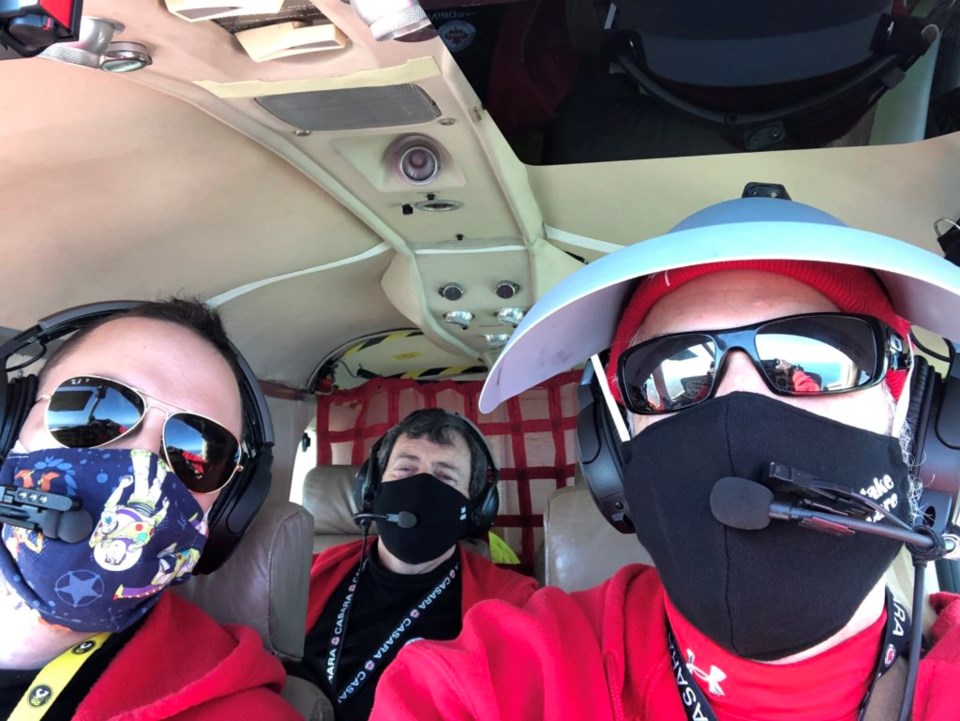
Navigator, Alex Cuberovic, Spotter, Paul Eyles, and Pilot Gord Tessier
(Gord Tessier)
This time of year reports of drownings are common across Ontario. As a volunteer with search and rescue, listening to reports with an eye for what could have prevented accidents from happening, I find the number one factor in drownings is not wearing a personal floatation device (PFD) on the water.
I love being outdoors, and don’t get out as much as I’d like, especially in summer. I really enjoy canoeing, and wouldn’t think of launching a canoe without safety gear, which includes wearing a PFD, properly secured.
By nature, accidents occur when we don’t expect them. And I’ve heard boaters say the reason they don’t wear a PFD is because they are good swimmers. Unfortunately, mishaps occur on the water, typically resulting in people not being able to swim. Statistics of drownings, occurring in Ontario, from the Lifesaving Society, indicate more than 80 per cent of the cases (for young adults it’s over 90 per cent) are of casualties not wearing a PFD, and 75 per cent of those are male.
In my role as training officer for Civil Air Rescue Emergency Service (CARES) Niagara, we’ve had to adjust the training procedures of volunteers to accommodate for COVID-19. In accordance with requirements of the Joint Rescue Coordination Centre, crews of CARES wear personal non-medical equipment while working in the close environment of small aircraft, or in ground search vehicles.
While classroom training at Niagara District Airport has been curtailed since mid-March, volunteers have continued online training, and since May have conducted simulated training with a reduced number of crew members.
This time of year, in addition to searches for missing aircraft, the common call for assistance is to search for missing persons in water on Lakes Ontario and Erie. For this, CARES volunteers coordinate training with Canadian Coast Guard and Canadian Coast Guard Auxiliary crews. Together we work hard to respond rapidly and efficiently to save lives.
People enjoying the water can help us significantly by being safe to begin with. Make sure you know your equipment; tell someone else where you plan to travel and the approximate time of your return; pay attention to weather forecasts; wear brightly-coloured clothing so search and rescue crews can see you; and wear a PFD, while having fun.
For further information on CARES Niagara, check the web site, http://caresniagara.ca.


